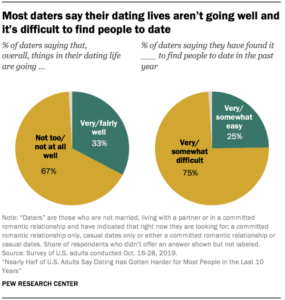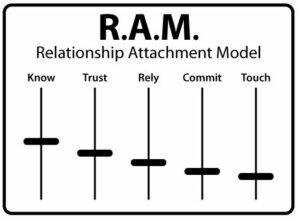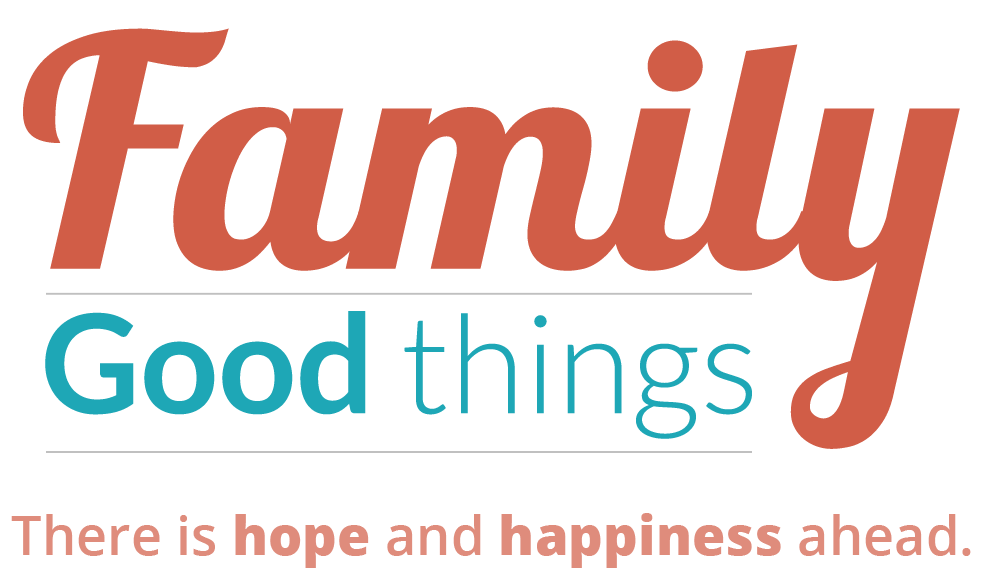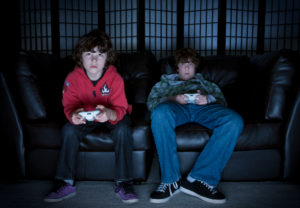by Guest Blogger | Jul 25, 2023 | Marriage

Living together sounds like a good idea, but what happens when the relationship ends? Terminating any partnership is hard, but doing so while living with someone becomes a complicated mess because your lives are intertwined. My friend Tammy moved in with her high school sweetheart shortly after graduating. Within a few years, they had two children together but never got married. Unfortunately, her partner became involved with another woman, and their cohabiting relationship came to an end. In addition to experiencing pain over the dissolution of the relationship, this created a ripple effect. Both my friend and her ex had to find a new place to live as neither could afford the rent on their own. This also meant that their children had to split their time between two homes, creating significant life changes and instability.
Unfortunately, her story is not unique. Cohabitation among couples has been on the rise. More couples are choosing to live together as a “trial run” before making a commitment to get married. As of 2018, 9% of adults ages 18 to 24, and 15% of adults ages 25 to 34 are living with a partner to whom they are not married. Since 2008, the number of cohabiting couples has risen by 12%. This is a common problem worldwide, as demonstrated by the 16% increase in cohabiting couples in the United Kingdom, from 2012 to 2022.
While many believe that cohabiting is a good way to try out the relationship to see if they should get married in the future, studies have found this may not be the case. They discovered a variety of negative impacts created by cohabitation. They found that cohabiting relationships tend to be less stable, have more conflict, have higher risks of child abuse, and are usually shorter in duration compared to marriage relationships. Additionally, individuals who are cohabiting tend to experience less satisfaction and trust in their relationship than those who are married, with 41% of cohabiting adults compared to 58% of married adults.
When a cohabiting relationship ends and children are involved, the negative impacts are even greater. One study found that children with cohabiting parents had an increased likelihood of experiencing parental breakup, which led to greater levels of externalizing behaviors, such as increased aggression and difficulty establishing and maintaining relationships. Cohabitation may create increased feelings of emotional instability for children. Another study found that adults in cohabiting relationships are more likely to engage in sexual activities with partners outside of their relationship. This increases the chances that the cohabiting relationship will dissolve as it produces a decrease in trust and satisfaction. Having unmarried, cohabiting parents can make children anxious about the future and unsure about their feelings.
If the results of cohabiting are typically negative, why are individuals still entering into this kind of relationship? One reason could be the fact that young adults now view marriage as a capstone event. It is something you do after you obtain an education and find a fulfilling career. This viewpoint could be the reason why fewer people are getting married and more are living together. Marriage is seen as less important compared to past generations. This viewpoint could turn cohabitation into a societal norm. Another reason could be a lack of knowledge. Perhaps individuals are unaware of the negative data connected to cohabitation. For example, statistics show that men and women in cohabiting relationships who have a child while in their 20s are three times more likely to end the relationship before their child turns 5 years old.
Whether or not you personally know someone in a cohabiting relationship, everyone in society is impacted in some way by these relationships. Children who experience a parental breakup are likely to experience a variety of adverse effects, such as behavioral issues, which then impact their school work, fellow students, and teachers. This could even lead to delinquent behaviors and criminal activity. Mothers in cohabiting relationships are likely to experience lower levels of relational satisfaction. This can cause stress which could spill over into other areas of their lives and negatively impact their parenting practices, which then affect their children. What happens during and after cohabiting relationships produces a ripple effect, adversely impacting individuals and societies, including you and me.
So, what can we do to combat this issue and reduce these negative impacts? A good place to start would be to educate ourselves on the negative effects of cohabitation. This could be done by gaining information from credible sources online, including this blog and other websites such as Marripedia. When people gain knowledge regarding cohabitation, they will be better able to make informed decisions. Another way is to share what you have learned regarding cohabitation with others. Even if you do not plan to cohabitate, having information on this topic is valuable to those you know. If they ever come to you seeking advice on this subject, you can share what you have learned regarding the negative impacts of cohabitation. Lastly, you can speak out and advocate for families and children by creating a support group on social media. This is a simple way to help others stay up to date on current information that can be quickly accessed and shared with a large audience. What will you do to protect families and children from experiencing these adverse effects?
My name is Shawna Trimmell and I am a Senior at Brigham Young University, Idaho. I will graduate next April with a bachelor’s degree in Marriage and Family Studies. I will also earn a certification as a family life educator. My husband Michael and I have been married for almost 19 years during which I’ve been blessed to be a stay-at-home mother to our four amazing children. I’m passionate about marriage and families and plan to pursue a career educating others on the significant impact they have on individuals and society.
by Guest Blogger | Nov 26, 2022 | Guest Posts
Many of you may be wondering why in the title of this article pop-culture dating is so bad tat it has to be compared to a polluted pond or a picture of a dead fish.That will be explained as this article goes on, but first, ponder this:
Does a fish that has lived in polluted water its entire life know that it is in polluted water? In other words, does the fish need to swim in clean water to know about pollution?? As you think of this analogy, reflect on your own dating experiences for a minute. How was it overall? What kinds of activities did you do? Was your experience mostly positive or negative? These questions might lead you to think back on some hilariously awkward, stressful, or anxiety-provoking situations that you felt during those times. I have plenty of dating experiences myself that fit that description, especially as a current college student. In my experience, people–or maybe it’s just college students–do not know how to date.
–
During my first three semesters of college, I was not asked on one date, just “hangouts”. When I did end up going on dates–because I caved in and downloaded a dating app–it felt as if I was only there to provide physical touch for guys that craved it. No bueno. It was so stressful and I started to despise going on dates and “hangouts” disguised as dates. It was clear that the dating culture I was suddenly immersed in was no longer about doing fun things and getting to know a wide variety of guys, it had now become people using one another fulfilling their wants masquerading as “needs”. Regardless of how each of us views our past dating experiences, think of how the current dating culture might impact young people today–especially your own children. How might it affect their relationships 20 years from now? How is this polluted dating culture affecting your relationships now?
–
According to the Pew Research Center, most people in the dating scene are not satisfied and think finding a significant other has gotten even harder today than it was in the past. Of those that are currently dating, 67% said that overall, their dating is not going well. Only 33% of daters in the study say that their dating is going very or fairly well overall (see chart).

So how did we get here? How did dating become something so negative? And why do we even still do it?
Unless you are Patrick Star and live under a rock at the bottom of the sea, you have probably noticed–especially on college campuses today–the popular terms of “hanging out” and “hooking up.” Hanging out is essentially watered-down dating without intention or purpose. Monto and Carey (2014) specify that hooking up is “a pattern involving transitory sexual interactions between partners who have no expectation of a continued romantic relationship or sexuality outside of a committed relationship.” In other words, hooking up is:
Sex without strings and relationships without rings.
For most people, especially those engaging in these activities, this phenomenon might not seem like such a bad thing. However, many studies have found that casual sex and the hang-out/hook-up culture can increase psychological distress, anxiety, depression, in addition to “[lowered] self-esteem and reduced life satisfaction” (Napper et al., 2016). I don’t know about you, but these outcomes do not sound very appealing. I personally have experienced these negative outcomes in my own life and can see them in the lives of my peers.
The Polluted Waters
Now back to the fish in polluted water. As you’ve probably already guessed, we young people are the fish and this toxic dating culture is the polluted water. Figuratively speaking, some of us have only ever known polluted water. And just like the fish, if you’re in this toxicity long enough, it can be harmful to your overall health. But there is hope! We can clean the “dating water” we are in and break the cycle creating a new environment for ourselves and our relationships. But how?
Using Dr. Jon Van Epp’s Relationship Attachment Model (RAM), we can gain some insight into good and healthy dating attitudes and habits. The RAM model (see image) is built with five sliders that are labeled: know, trust, rely, commit, and touch. Each of these are important components of any and all relationships. Dr. Van Epp explains in his book How to Avoid Falling in Love with a Jerk that each slider should be slightly lower than the previous one…in ascending order. This simply means, it is important to know someone more than you trust them; and to trust them more than you rely on them; and to rely on them more than you are committed to them; and to commit to them more than your amount of physical touch.

The dating culture today–which is generating more emotional and mental health problems–is more of a “Relationship Detachment Model.” Physical touch is often the highest slider, rather than one’s knowledge of and trust in the person with whom they are having sex.
Essentially, research has discovered that healthy dating (i.e., clean water) follows this model and helps to build stable and satisfying relationships that can then enhance future families and society as a whole.
If more of us follow this model, especially in high school or college, the dating waters will be clean and individuals and couples will thrive, both in these dating stages and later on in marriage or with our families. The principles of the RAM have changed me and the way I approach dating for the better! I strongly encourage you to read How to Avoid Falling in Love with a Jerk, incorporate its ideas, and teach others to do the same.
Sydney Stratton is from Lubbock, Texas, and is a junior in Marriage and Family Studies at Brigham Young University – Idaho. She is currently the Vice President of the Child and Family Advocacy Society on campus.
by Rob Stewart | Apr 18, 2016 | Marriage

Some of you won’t like what I have to say here. In fact, if you consider yourself “a romantic,” this article might initially anger you. But please read the entire article prior to chiding me with your remarks in the comment section! Honestly, understanding this concept can save marriages!
The Myth of the Soulmate
The idea of soulmates is a well beloved myth indeed. Those that hold this expectation generally believe that there is one, and only one, right person to marry – their soulmate.
The idea of a soulmate is quite a romantic notion and has been the plot of countless cherished books and movies. But, please pay attention – this myth is incredibly dangerous. Let me explain!
Dangers Caused by the Soulmate Myth
There is one major hazard for those who prescribe to this myth. Those who assume that marital bliss is a result of finding their one soulmate dangerously shift responsibility away from improving themselves or nurturing their marriage.
In other words, rather than working hard on our own individual improvement and working equally hard at nurturing our marriage, we can be tempted to assign all the blame to the spouse.
A 2014 study noted that couples either view their marriages as destiny or growth. Couples that view their marriage as destiny generally believe that their spouse is their soulmate. One of these researchers, Dr. Spike W. S. Lee, noted the following during a recent interview:
“If we are soulmates, then nothing will go wrong in our relationship, and it will be easy. A conflict makes a destiny-believer question whether the current partner is actually their soulmate, and then they give up on working it out.”
Too often, “destiny” couples who are not happily married (though they had ironically once believed that their spouse was their soulmate), simply believe they were duped and that they didn’t marry their soulmate after all. Somewhere, their soulmate must still surely exist.
Can you see the danger here? Not only are we less likely to work at a marriage if we assume it will come easily to the two of us (due to the belief that we found our “one and only”), but couples are also more likely to sever such a union when times get tough.
There is, of course, a need for certain marriages to end in divorce. But I suspect the number of actual divorces would be much lower if we realized how poisonous this soulmate myth actually is to the marriage relationship.
Lest you feel sorry for my wife for my utter insensitivity to this well-beloved myth, might I suggest a more romantic solution?
Each of us should spend our best efforts in becoming one another’s soulmates. Now that really is romantic! See, I told you I’d make it right!
Becoming each other’s soulmate is a worthy goal for every couple. So, while my wife could have found marital happiness with other guys and I surely could have married other women, today neither of us could imagine life without each other.
Become Your Spouse’s Density (I mean destiny)
Becoming each other’s soulmates doesn’t just happen accidentally. Rather, it is the result of intentional effort, love, forgiveness, and a reduction in our selfish tendencies. Unlike the dangerous soulmate myth, actually striving to become one another’s soulmate would be a fantastic (and realistic) goal for any couple striving towards a ridiculously happy marriage!
Please help us strengthen families by sharing this article with your friends and family! Likewise, to see more of Dr. Rob’s articles (as well as articles by Dr. Tim), please also check out the rest of our
blog and our
Facebook page.












